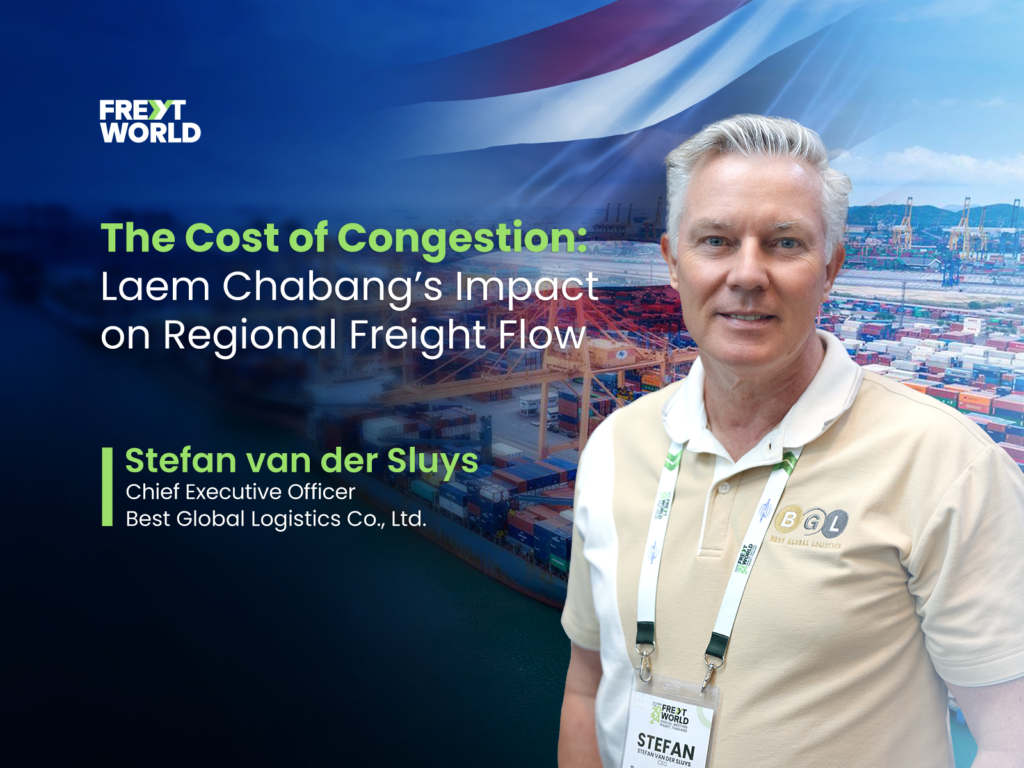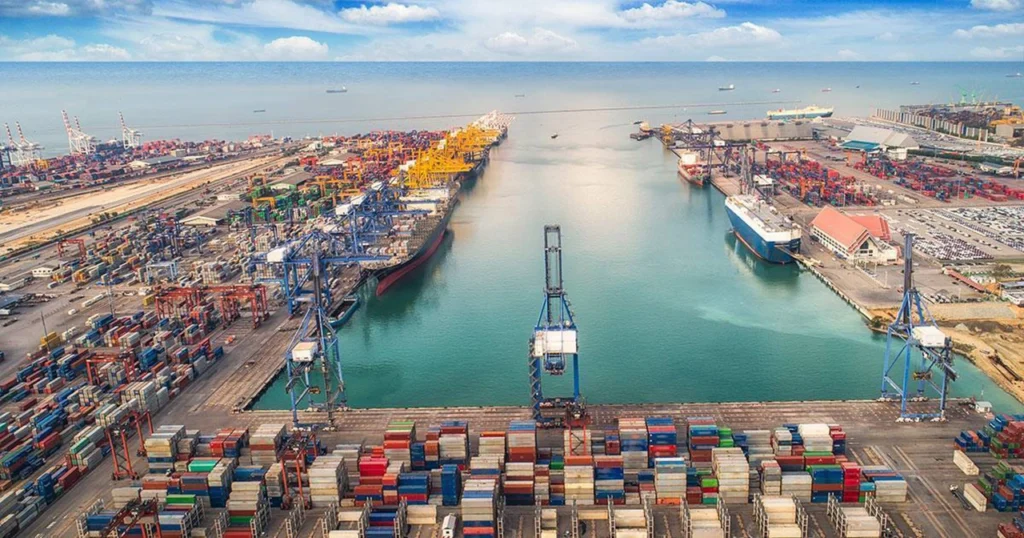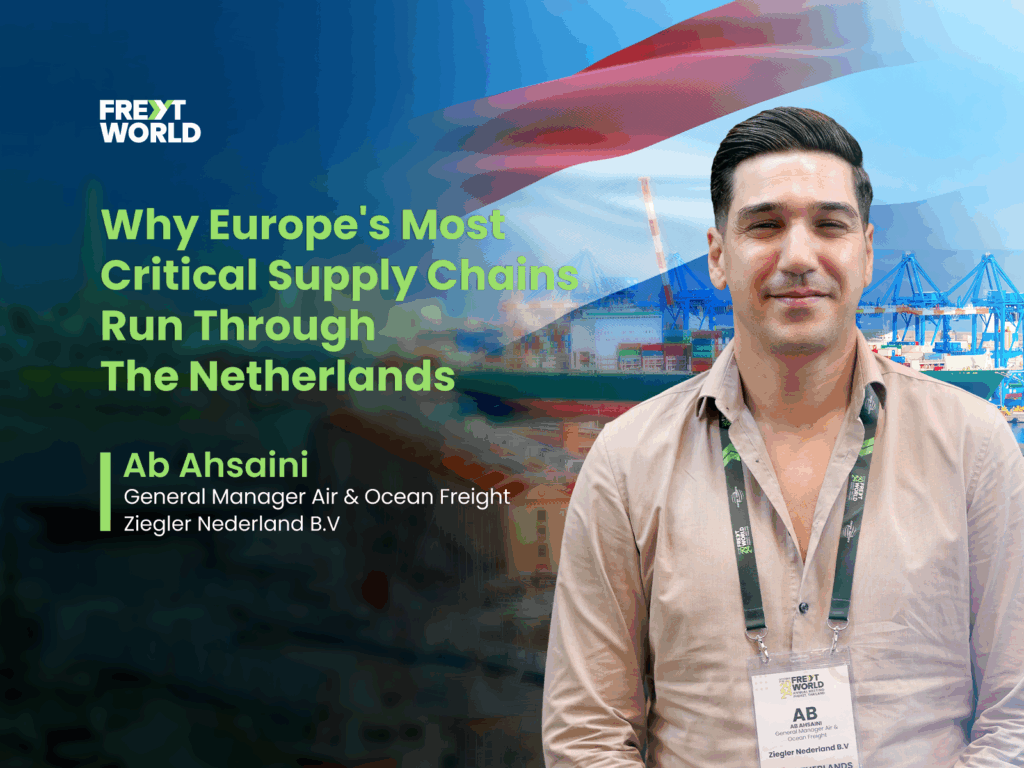By Stefan van der Sluys, CEO, Best Global Logistics Co., Ltd. (BGL)

Every morning, hundreds of container trucks queue outside Laem Chabang Port. By afternoon, many of them are still waiting. For freight forwarders like us, this is not an occasional disruption—it is a daily operational challenge. At Best Global Logistics, we are witnessing firsthand the rising costs, scheduling uncertainty, and erosion of service standards tied to delays that now stretch from six to fifteen hours just to complete a drop-off.
Laem Chabang: ASEAN’s Trade Artery Under Pressure

Laem Chabang’s Role in Regional Trade
Handling over 9.4 million TEUs annually and more than 6 million truck movements, Laem Chabang is critical to both Thailand’s export economy and broader ASEAN trade. Its performance is directly linked to supply chain efficiency across multiple industries. When it slows down, regional freight slows with it.
The current congestion has exposed just how stretched the port’s systems have become. Peak-hour truck arrivals, often concentrated between mid-morning and early evening, routinely exceed the terminal's capacity. Combined with inconsistent adoption of queuing systems and lack of enforcement, this creates bottlenecks that ripple far beyond the port perimeter.
Root Causes: Volume, Behavior, and Systemic Gaps
Some of the delays can be traced to scheduling practices. The concentration of traffic into predictable windows overwhelms infrastructure that was not designed for such intensity. Although Laem Chabang operates 24/7, the lack of meaningful incentives for nighttime or off-peak transport contributes to inefficient traffic patterns.
Terminal congestion is further complicated by behavior on the cargo owner’s side. Import containers are being held in-port longer than necessary—often to delay duty payments or to avoid inland storage fees. This practice slows yard turnover and restricts available capacity. While it may serve short-term financial strategies, it disrupts container flows and impacts scheduling for everyone downstream.
The situation is made worse by reports of informal payments enabling queue jumping. These undermine not only trust in the system but also the predictability essential to coordinated delivery planning. While difficult to quantify, the perception of corruption feeds reluctance to rely on the official process, creating a parallel system that distorts capacity even further.
Institutional Response: Progress, but Not Yet Impact
The Port Authority of Thailand (PAT) has acknowledged the severity of the problem. In response, it has created a task force to examine root causes and formed new engagement channels for industry stakeholders. These initiatives include proposed improvements to truck queue management, the development of offsite truck holding zones, and enforcement mechanisms aimed at limiting in-port dwell times.
Efforts are also underway to crack down on unofficial practices through anonymous reporting lines and public commitments to transparency. These measures are important, but their success depends entirely on execution and enforcement. Without fast, coordinated implementation across all terminals, the operational environment is unlikely to change meaningfully.
Commercial Exposure and Client Expectations
For logistics providers who manage daily flows through Laem Chabang, these issues carry direct commercial consequences. Waiting trucks increase costs—fuel, labor, opportunity—and put pressure on delivery commitments. Missed cutoffs for outbound vessels are becoming more frequent. These delays create uncertainty in transit times, which affects everything from invoicing cycles to seasonal planning.
When service commitments become unpredictable, it becomes harder to protect customer confidence. The value proposition shifts from reliability to risk mitigation—something few clients are eager to pay for.
At BGL, we’ve had to adjust our internal planning processes. Delivery cut-offs have been pulled forward, and route planning is being updated more frequently. We’re also advising customers on alternate routings and, where possible, redistributing shipments through other gateways. These are contingency measures, not long-term solutions, and they come at a cost.
Laem Chabang as a Regional Signal
This is not just a local issue. Similar strains are appearing at other regional ports as trade volumes grow without corresponding upgrades in port-side infrastructure. In Ho Chi Minh, Manila, and Jakarta, congestion is now a predictable part of operations. What’s happening in Laem Chabang is a warning sign of broader capacity mismatches in the region.
The disconnect between trade policy—focused on expansion and diversification—and infrastructure capacity is becoming more apparent. Trade agreements and customs modernization can only go so far if the ports through which goods move remain under stress. Infrastructure needs to catch up with policy, and planning must include realistic forecasts based on seasonal peaks and industry cycles.
Responsibility and the Path Forward
Those managing logistics flows can’t solve this problem alone. But we do have a role to play in shaping practical responses. Operational data, customer feedback, and day-to-day experience are all valuable inputs in designing more resilient port systems. They need to be part of the conversation—at roundtables, through industry associations, and directly with authorities.
Engagement must go beyond feedback. It should include coordination on scheduling incentives, enforcement of container dwell penalties, and testing of new queue systems that reflect real operational complexity.
There is also a role for customer education. Clients who delay container pick-up at the port to minimize costs need to understand the broader consequences. When terminal space is misused, the costs are redistributed across the chain—often in the form of rising rates, missed transshipments, or shipment rollovers.
Beyond Adaptation
Workarounds are useful, but they cannot become the new standard. If temporary fixes substitute for real reform, service standards will continue to erode. Logistics providers will find themselves constantly managing exceptions instead of executing well-planned operations.
The current congestion at Laem Chabang is more than a nuisance. It is a test of coordination, planning, and institutional accountability. The challenge is not simply to move more containers, but to move them predictably. That’s what customers pay for. That’s what sets market leaders apart.
The slowdown at Laem Chabang is not just a local bottleneck. It is a reflection of the tension between rising demand and uneven infrastructure development. The port still holds a central place in Thailand’s economic strategy and ASEAN’s regional trade, but its current condition threatens to undermine that position.
Those of us responsible for moving goods through this corridor cannot afford to wait for a perfect fix. We must engage, adapt, and advocate for the systems we rely on every day. Reliability begins long before a container is loaded. It starts with planning, accountability, and the infrastructure decisions we make—or fail to make—today.
Freyt World Blog Contributor
Freyt World is a global logistics network uniting members from around the world. Our mission is to revolutionize global logistics through collaboration and innovation. Our platform goes beyond networking, enabling members to excel and grow together, featuring articles by logistics professionals for their peers. This series will cover industry-relevant issues and news, providing valuable insights for professionals in the field.



